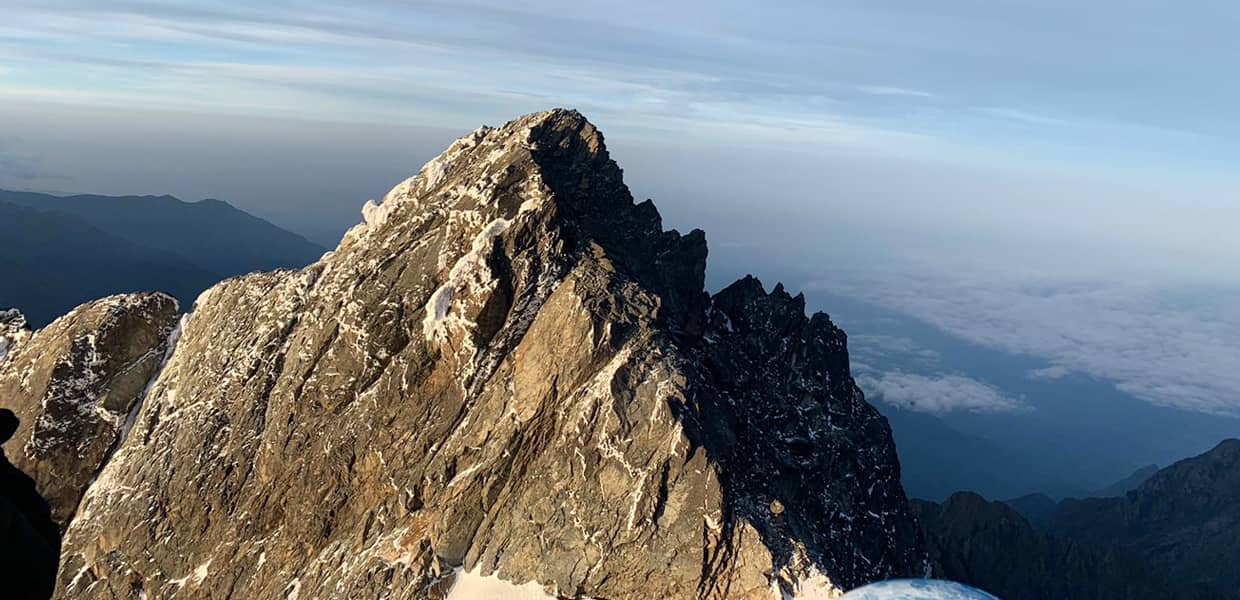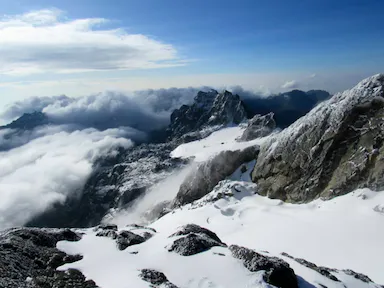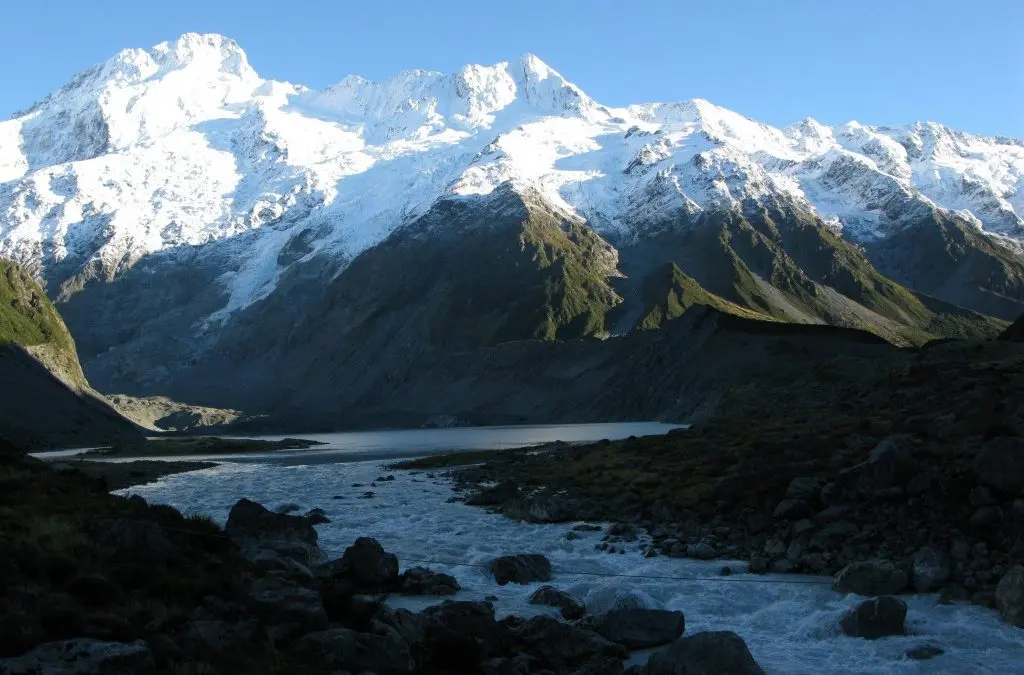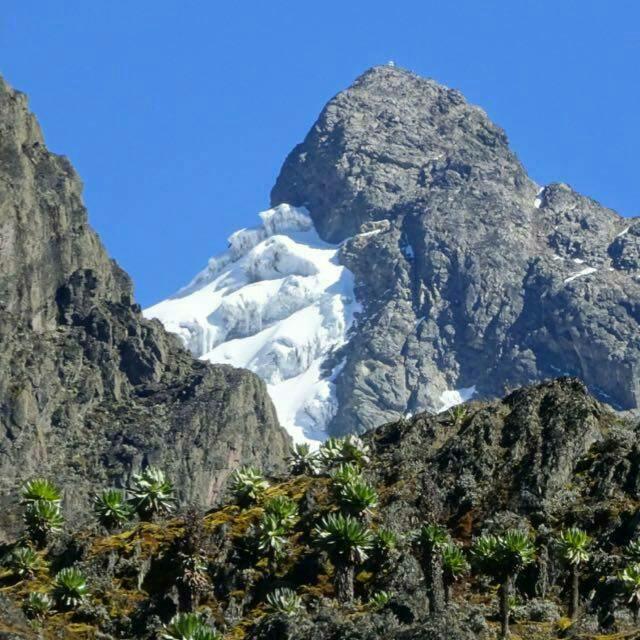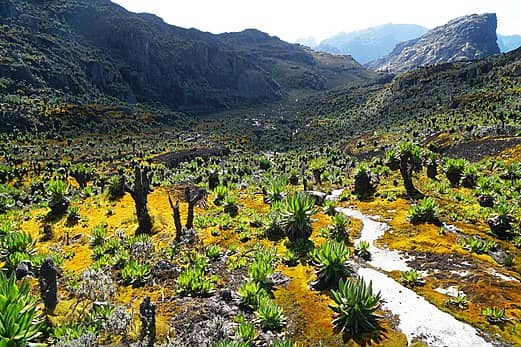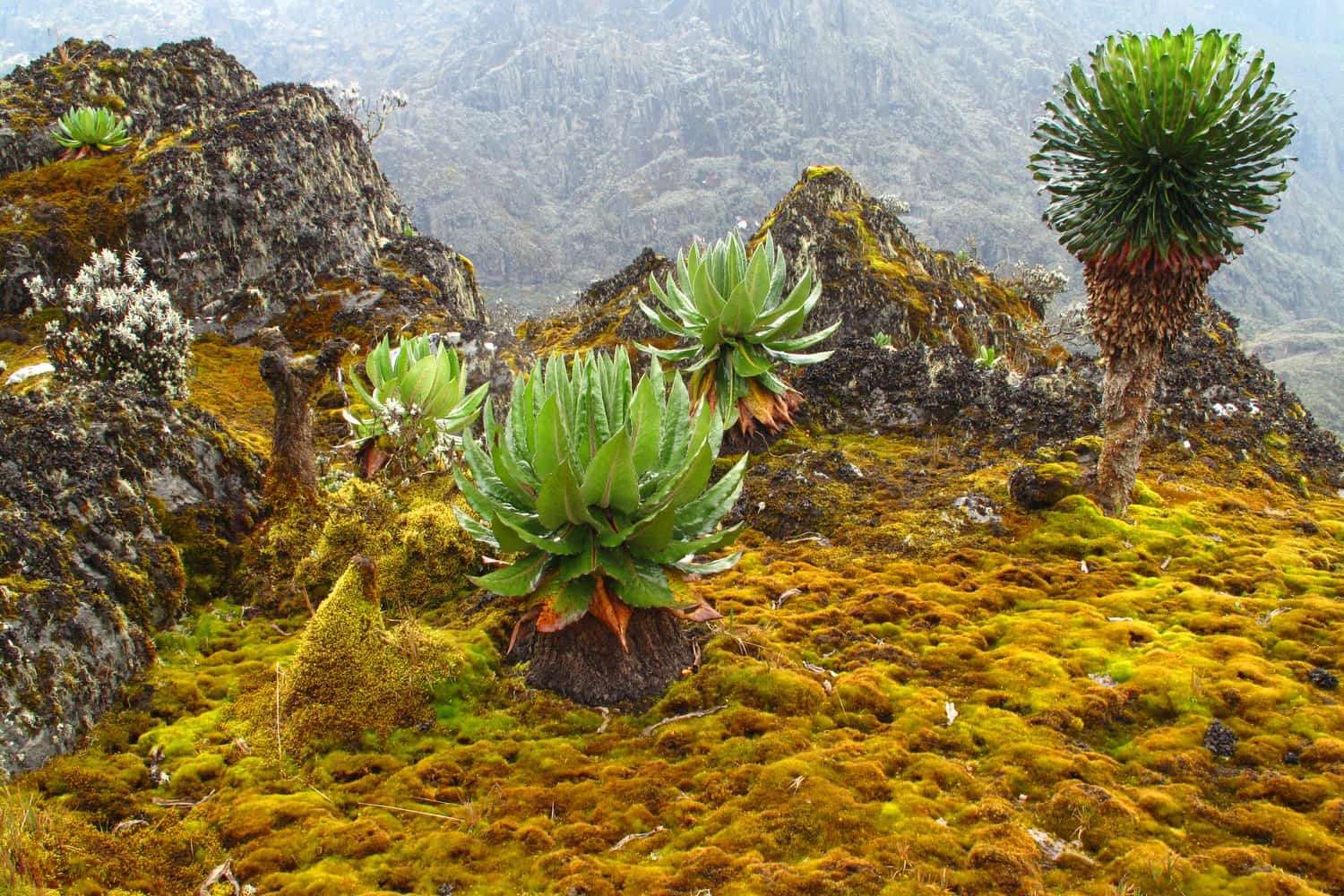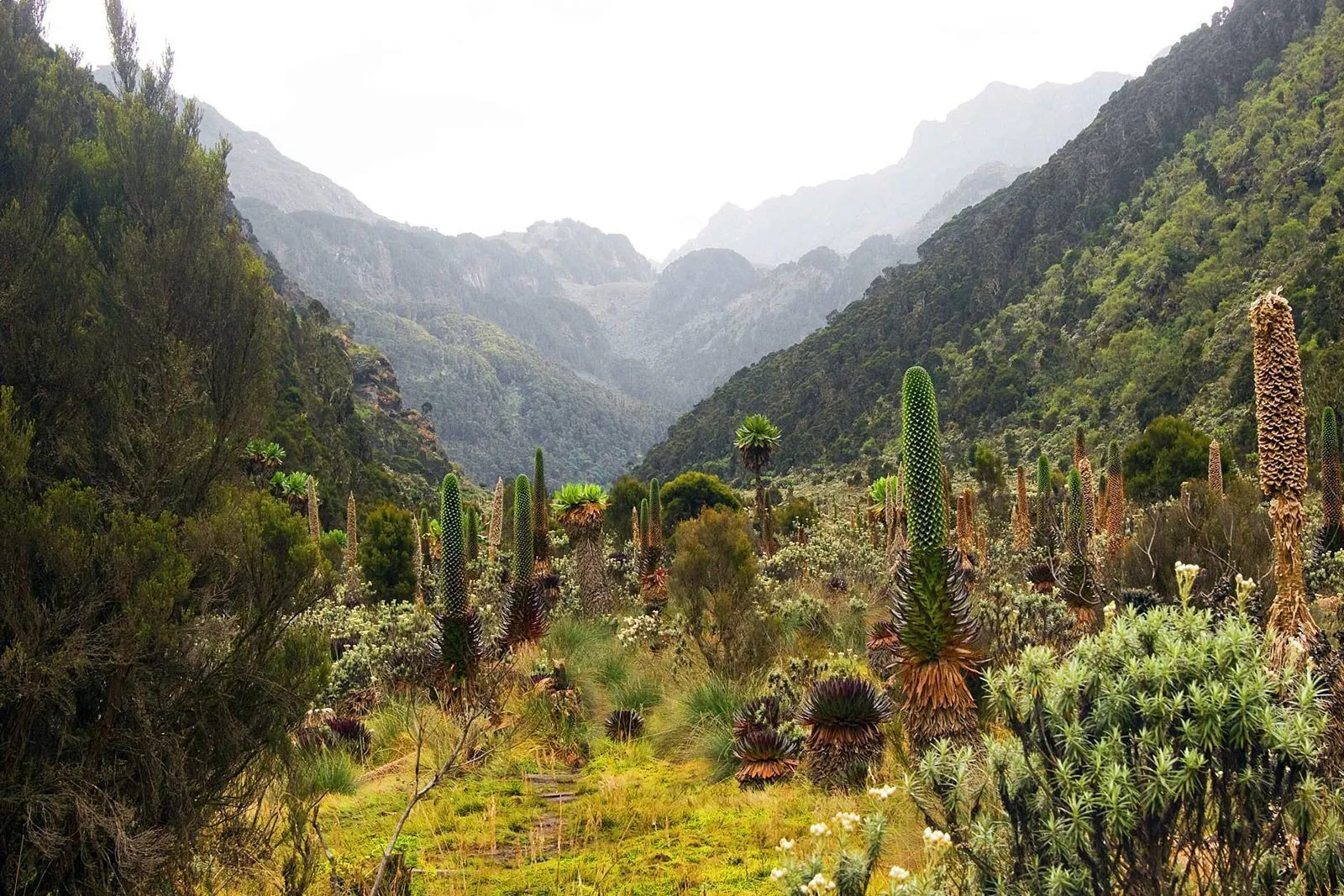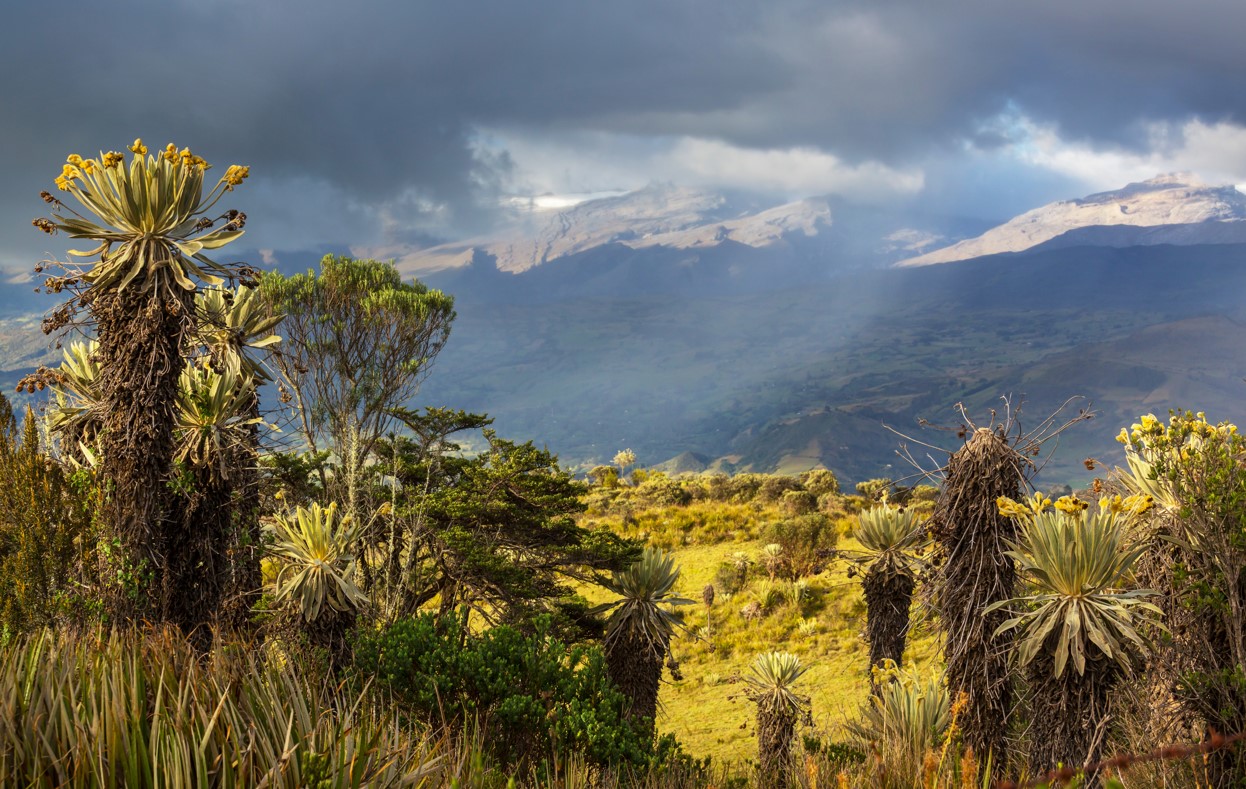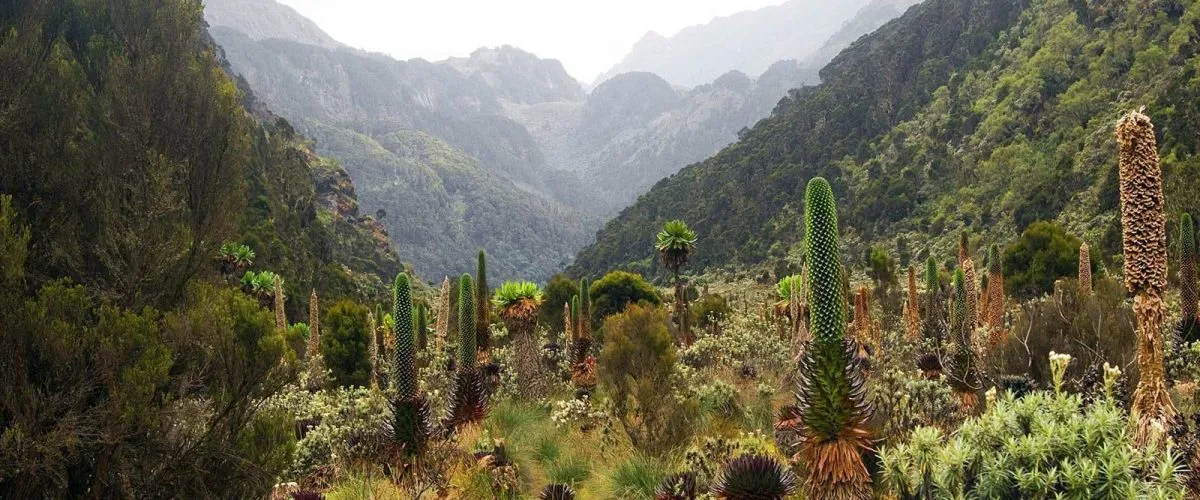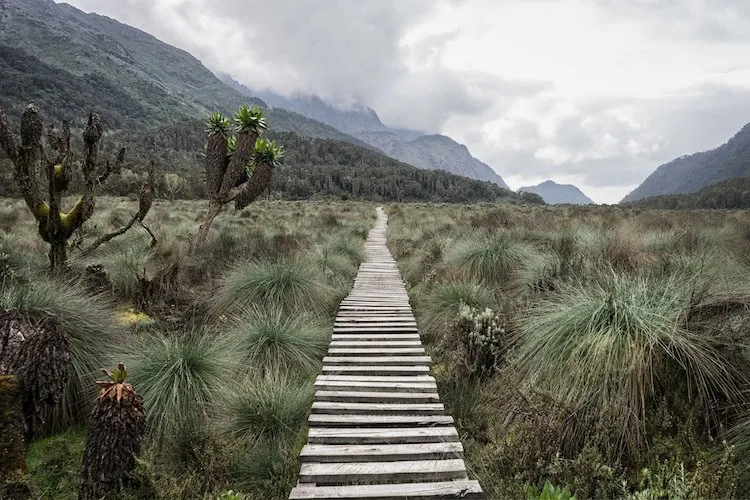Mount Rwenzori National Park
Mount Rwenzori national park

The Rwenzori Mountains, often dubbed the “Mountains of the Moon,” are a spectacular and complex mountain range situated on the border between Uganda and the Democratic Republic of Congo. Known for their dramatic landscapes, the Rwenzoris are a prominent feature of the Albertine Rift, part of the East African Rift System. Their unique geological and climatic conditions create a diverse range of ecosystems and habitats, making them one of Africa’s most intriguing and challenging regions.
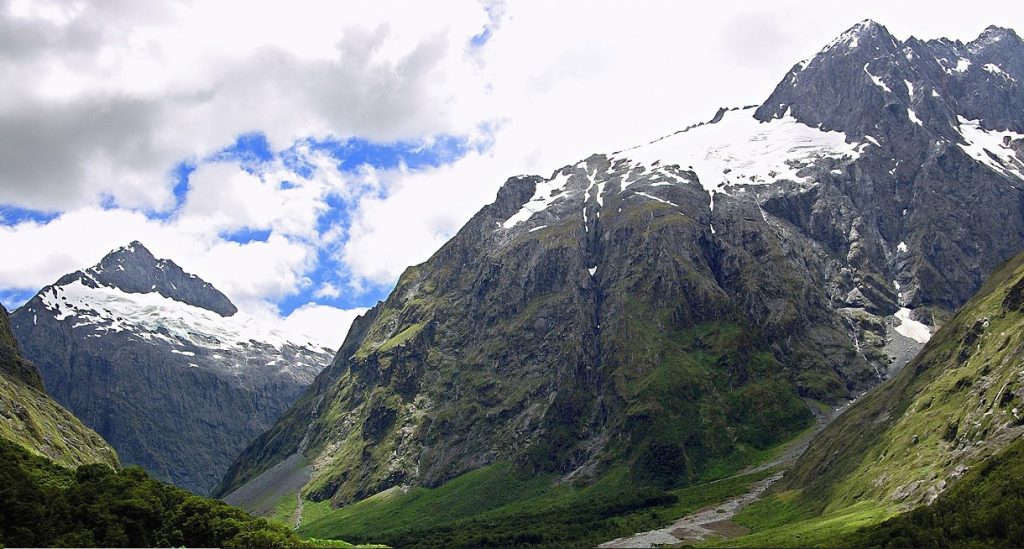
Overview of Mt. Rwenzori National Park:

The Rwenzori Mountains offer a unique blend of natural beauty, challenging adventure, and rich cultural experiences, making them a captivating destination for explorers and nature enthusiasts.
Geological and Geographical Features
- Formation: The Rwenzori Mountains are an ancient mountain range formed by tectonic activity and volcanic processes. The range is primarily composed of crystalline rocks such as granite and gneiss. The mountains are not volcanic but are instead the result of geological uplift.
- Peaks and Glaciers: The range is home to several high peaks, with Margherita Peak being the highest at 5,109 meters (16,763 feet). Other notable peaks include Stanley Peak, Speke Peak, and Baker Peak. The glaciers, including the Stanley and Elena glaciers, are remnants from the last ice age and are shrinking due to global warming.
- Rivers and Lakes: The mountain range feeds numerous rivers and lakes, which are crucial for the surrounding ecosystems. Key rivers include the Semliki and the Lhubiriha, while lakes such as Lake Bujuku and Lake Mobuku are significant for their ecological and hydrological roles.
Climate and Weather
- Tropical Mountain Climate: Despite their proximity to the equator, the Rwenzori Mountains experience a temperate climate due to their high altitude. The weather is characterized by high rainfall, with some areas receiving up to 3,000 millimeters (118 inches) of rain annually. This rainfall supports lush vegetation and creates a misty, often ethereal environment.
- Temperature: Temperatures can vary significantly with altitude. At lower elevations, temperatures range from 15°C to 25°C (59°F to 77°F), while at higher elevations, temperatures can drop to near freezing, especially at night. The high altitudes also mean that snow and ice are present on the highest peaks.
Flora and Fauna
- Flora: The Rwenzori Mountains exhibit distinct ecological zones:
- Lowland Forests: Rich in biodiversity, including giant ferns, mahogany trees, and various lianas.
- Montane Forests: Characterized by dense vegetation and bamboo groves.
- Alpine Moorlands: Home to unique plant species such as giant lobelias and groundsels, adapted to the harsh conditions of high altitudes.
- Heather Zones: Covered with dense, shrubby vegetation that thrives in cooler temperatures.
- Fauna: The Rwenzori Mountains are known for their rich wildlife:
- Mountain Gorillas: Although primarily found in the Virunga Mountains, some populations also live in the Rwenzori foothills.
- Golden Monkeys: Endemic to the region, these monkeys are found in the lower montane forests.
- Colobus Monkeys: The L’Hoest’s monkey, a rare species, resides in the forested areas.
- Antelopes: Including the bongo, a rare forest antelope, and various duikers.
- Birdlife: Over 200 bird species, including the Rwenzori turaco and Rwenzori double-collared sunbird, make the range a bird-watching paradise.
- Insects: The high-altitude conditions support unique insect species adapted to the cooler temperatures.
Tourism and Activities
- Mountain Climbing and Trekking: The Rwenzori Mountains are a prime destination for mountaineers and trekkers. Routes such as the Central Circuit, the Rwenzori Trek, and the climb to Margherita Peak offer varying levels of challenge and adventure. The treks pass through diverse ecological zones, providing a comprehensive experience of the range’s natural beauty.
- Wildlife Viewing: The unique flora and fauna make wildlife viewing a significant attraction. Guided treks offer opportunities to spot rare and endemic species in their natural habitats.
- Cultural Encounters: The local Bakonjo people, who live around the foothills of the Rwenzoris, offer rich cultural experiences. Visitors can engage with the local communities, learn about their traditional practices, and explore their cultural heritage.
Conservation and Challenges
- Conservation Efforts: The Rwenzori Mountains National Park is protected under national and international conservation programs. Efforts are focused on preserving the unique ecosystems, protecting endangered species, and promoting sustainable tourism.
- Climate Change: The glaciers of the Rwenzoris are shrinking due to global climate change. This has significant implications for the hydrology of the region and the ecosystems that depend on glacial meltwater.
Accessibility
- Entry Points: The primary access point for visitors is through the town of Kasese in Uganda, which is approximately 400 kilometers (about 6 hours) from Kampala. The park can also be reached from Bukavu in the Democratic Republic of Congo.
- Guided Treks: Due to the challenging terrain and high altitude, guided treks are highly recommended for climbing and trekking activities.
Facts about Rwenzori National Park
- Located on the border between Uganda and the Democratic Republic of Congo.
- Highest peak: Margherita Peak at 5,109 meters (16,763 feet).
- Other peaks include Stanley Peak and Speke Peak.
- Designated a UNESCO World Heritage Site in 1994.
- Home to several glaciers, including the Stanley and Elena glaciers.
- Formed by tectonic activity and volcanic processes.
- Features diverse ecosystems: lowland forests, montane forests, alpine moorlands, and heather zones.
- Receives up to 3,000 millimeters (118 inches) of rainfall annually.
- Rich flora includes giant lobelias, groundsels, and bamboo forests.
- Diverse fauna includes mountain gorillas, golden monkeys, L’Hoest’s monkeys, and over 200 bird species.
- Part of the Albertine Rift and East African Rift System.
- Challenging trekking and climbing destination with guided treks recommended.
- Local communities include the Bakonjo people.
- Faces conservation challenges due to climate change and glacier shrinkage
Flora & Fauna
Flora:
- Lowland Forests
- Montane Forests
- Bamboo Groves
- Alpine Moorlands
- Heather Zones
- Giant Lobelias
- Giant Groundsels
- Giant Water Lilies
Fauna:
- Mountain Gorillas
- Golden Monkeys
- L’Hoest’s Monkeys
- Bongos
- Duikers
- Rwenzori Turaco
- Rwenzori Double-Collared Sunbird
- Unique High-Altitude Insects


